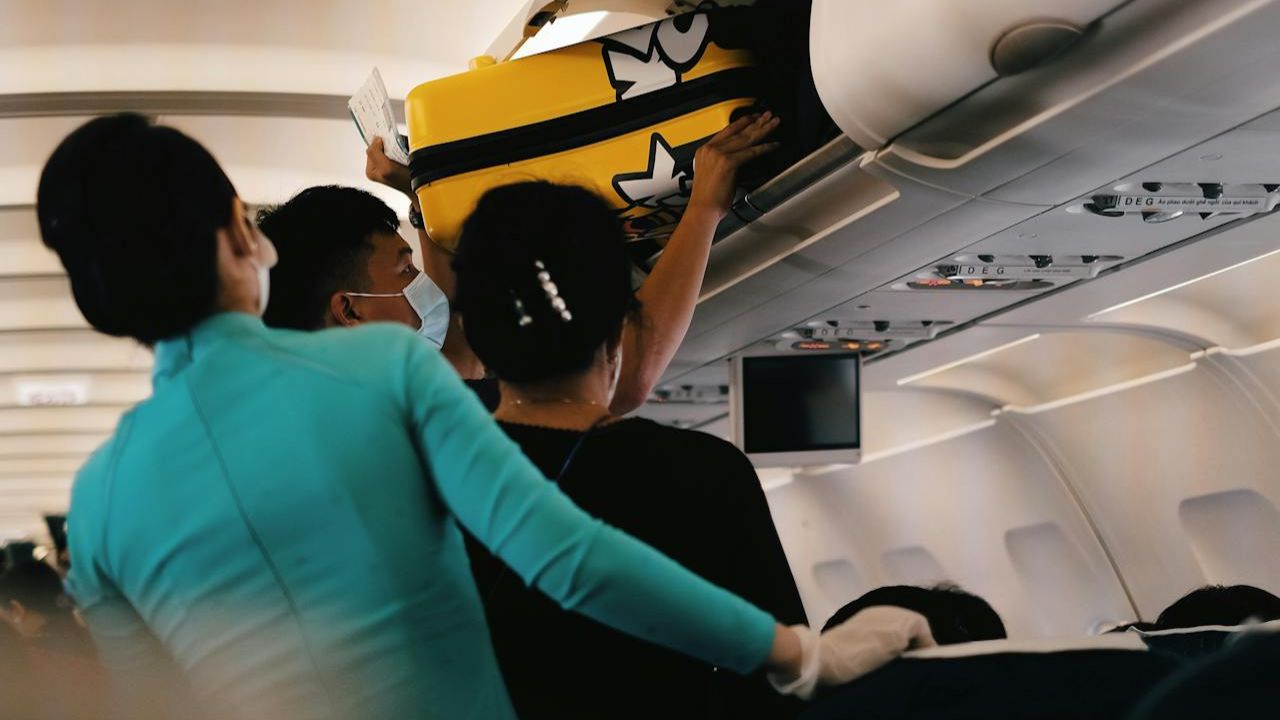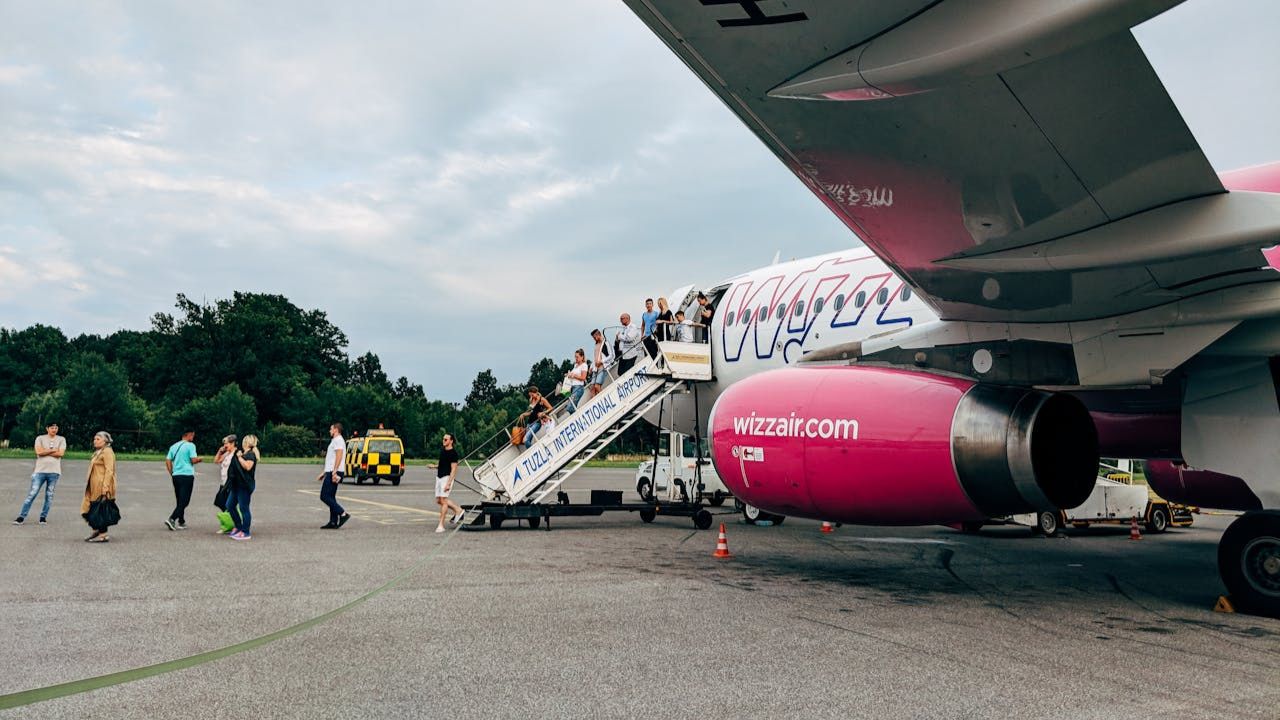Most in-flight friction comes from small choices. Bags block aisles. Speakers blare. People stand before the brakes are set. Flight attendants see these patterns every day and fix them while the rest of us watch the clock. The cure is not complicated. Know how to share space, stow bags the way crews do, keep sounds and smells to yourself, follow safety rules, and deplane in order. Do those things, and your flight gets easier for everyone.
Share the space you paid for
Sit inside your own footprint. Keep elbows light and feet on your floor area, not in the aisle or against a seatmate. In a three-across row, the widely accepted courtesy is that the middle seat gets both armrests. Window and aisle each get one. That split prevents most small arguments before they start. Travel etiquette sources and airline features have repeated this rule for years.
Recline with care. Look behind you first, then ease the seat back slowly. A quick “mind if I recline a bit” defuses tension. If the person behind you has a laptop open, give them a second to adjust before you move. These tiny pauses signal respect in a tight space.
Keep your belongings tight. If you brought a jacket, place it on top of your own bag after the larger suitcases are in. Do not occupy a whole bin with a coat or hat. That space is for hard-sided carry-ons.
Master the overhead bin and the aisle

Arrive at your row ready. Step into the row, lift once, load correctly, and close the door cleanly. A bag is not considered secured until the door is fully closed and latched. Flight attendant manuals and FAA guidance are explicit about that requirement. If a bin will not latch, the crew must rearrange items or move your bag. Let them do it. Safety rules give them that responsibility.
Know what goes overhead and what does not. Slim backpacks and small totes usually belong under the seat and must not block access to the aisle. Carry-ons can go in the bin, under the seat, or in a placarded closet, but only if they are restrained and do not hinder emergency equipment. That language comes directly from federal regulations.
Keep the aisle moving. Do not stop ten rows early to reorganize. Walk to your seat first, then stow. If the bins above your row are full, ask a flight attendant to help find space rather than stashing far forward. When bags are parked in the wrong rows, people at the front must fight upstream later, which slows everyone.
Watch how the first few bags are oriented and copy that pattern. On many aircraft, wheels-first and upright is most efficient. Some newer bins are designed for side-loading. Crews know the best orientation for each model, and they work faster when passengers match it.
Quiet, clean, and shoe-smart
Wear headphones for any audio. The cabin is a shared room, not your living room. Flight attendants regularly list speaker-only music and videos among their top pet peeves. If a crew member needs your attention, they will get it. Until then, let the cabin stay quiet.
Keep smells in check. Strong, hot foods linger in a sealed cabin. Choose mild snacks and seal containers quickly. Wipes or sanitizer help, but a neutral-smelling meal is kinder to the people beside you.
Keep your shoes on when you head to the lavatory. Lav floors can be wet or dirty, and bare feet are a hygiene risk. Closed, secure shoes are also safer in an evacuation. Cabin-crew interviews and travel safety explainers call this out often for a reason.
Food, drinks, batteries, and basic compliance
Pace your alcohol. Alternate with water. There is also a firm federal rule here. You may only drink alcohol that is served by the airline. Personal bottles are not for onboard consumption. Crews are required to stop service to anyone who appears intoxicated. That is not a suggestion; it is federal law.
Treat batteries correctly. Spare lithium batteries and power banks must stay with you in the cabin. If your carry-on is tagged at the gate, remove them before handing the bag over. Terminals should be protected from short circuits. The FAA’s PackSafe page spells all of this out clearly, and recent safety notices have highlighted these rules again.
Follow crew instructions on stowage. Regulations make airlines responsible for proper carry-on storage and clear aisles. That is why you will sometimes see flight attendants reshaping a row, moving dense items, or asking you to place a small bag under the seat. They are enforcing rules that keep the cabin safe when it matters.
Deplane without drama

Wait for the seatbelt sign. Stand when it turns off. Let rows exit in order. Cutting ahead rarely saves time and often slows the line. If you have a tight connection and need to jump forward, ask politely. Most crews will make an announcement, and nearby passengers will wave you through. Good etiquette here is simple and widely endorsed by travel outlets that cover cabin behavior.
Open the bin slowly with one hand on the door and one on your bag. Items can shift in flight. If a coat or tote falls, catch it and hand it back. Close the bin after removing your luggage so the person behind you can move without delay.
A quick “thank you” to the crew helps. Courtesy sets the tone and costs nothing.
The simple formula to remember
Share space. Load like the crew. Keep sounds and smells to yourself. Wear shoes to the lav. Drink what the airline serves and pace it. Keep batteries in the cabin. Then wait for your turn to leave. Follow that formula and you will feel the difference before wheels-up.
Sources
- 14 CFR §121.589: where carry-ons may be stowed and the requirement for approved restraints and closed bins. eCFR+1
- FAA cabin guidance: “baggage is neither properly stowed nor restrained unless the overhead bin door is closed and latched.” Federal Aviation Administration
- 14 CFR §121.575: passengers may only drink alcohol served by the airline; crew must not serve intoxicated passengers. Legal Information Institute
- FAA PackSafe on lithium batteries and power banks in carry-on only; remove if a carry-on is gate-checked. Federal Aviation Administration
- Reader’s Digest and Forbes on the middle-seat armrest, courtesy norm. Reader’s Digest+1
- Travel + Leisure and other roundups on flight attendant pet peeves, including speaker-only audio. Travel + Leisure
- Southern Living etiquette explainer on orderly deplaning. Southern Living


